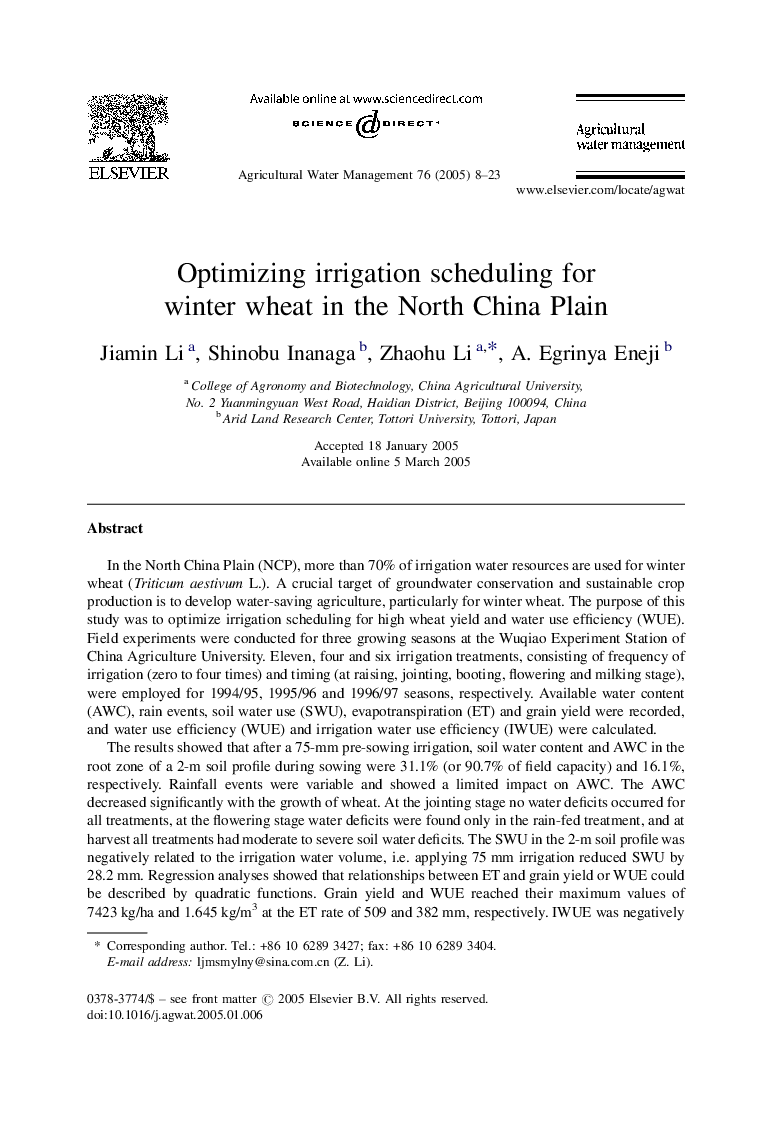| Article ID | Journal | Published Year | Pages | File Type |
|---|---|---|---|---|
| 9467416 | Agricultural Water Management | 2005 | 16 Pages |
Abstract
The results showed that after a 75-mm pre-sowing irrigation, soil water content and AWC in the root zone of a 2-m soil profile during sowing were 31.1% (or 90.7% of field capacity) and 16.1%, respectively. Rainfall events were variable and showed a limited impact on AWC. The AWC decreased significantly with the growth of wheat. At the jointing stage no water deficits occurred for all treatments, at the flowering stage water deficits were found only in the rain-fed treatment, and at harvest all treatments had moderate to severe soil water deficits. The SWU in the 2-m soil profile was negatively related to the irrigation water volume, i.e. applying 75 mm irrigation reduced SWU by 28.2 mm. Regression analyses showed that relationships between ET and grain yield or WUE could be described by quadratic functions. Grain yield and WUE reached their maximum values of 7423 kg/ha and 1.645 kg/m3 at the ET rate of 509 and 382 mm, respectively. IWUE was negatively correlated with irrigated water volume. From the above results, three irrigation schedules: (1) pre-sowing irrigation only, (2) pre-sowing irrigation + irrigation at jointing or booting stage, and (3) pre-sowing irrigation + irrigations at jointing and flowering stages were identified and recommended for practical winter wheat production in the NCP.
Keywords
Related Topics
Life Sciences
Agricultural and Biological Sciences
Agronomy and Crop Science
Authors
Jiamin Li, Shinobu Inanaga, Zhaohu Li, A. Egrinya Eneji,
